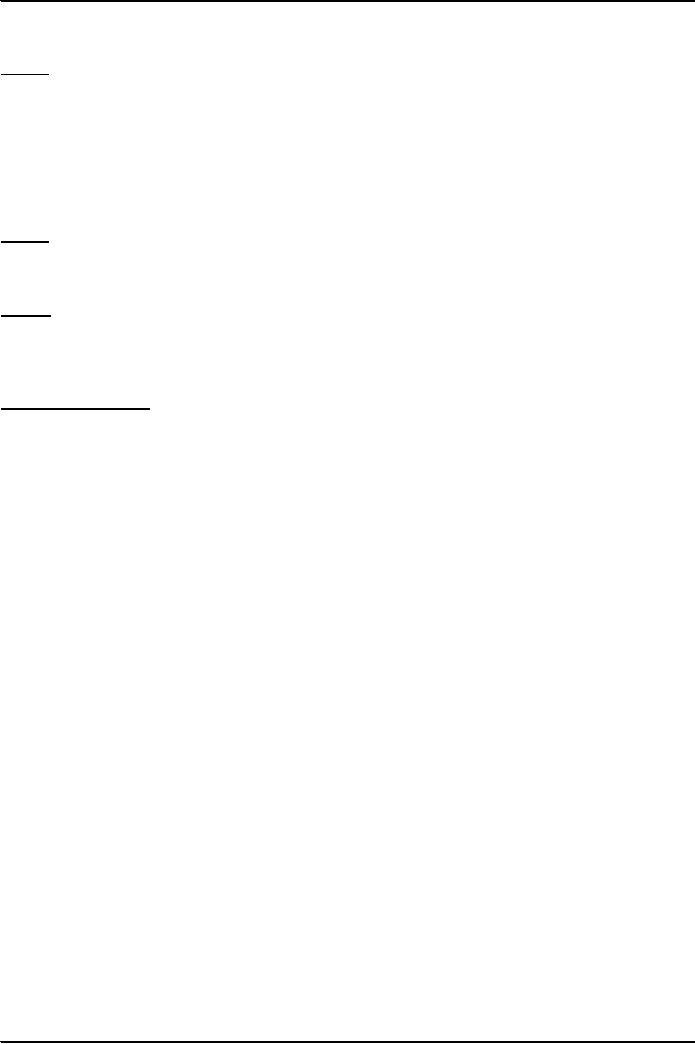 |
CULTURE (continued):Beliefs, Norms, Cultural Diversity |
| << CULTURE:Universality, Components of Culture, Symbols, Language |
| CULTURE (continued):Culture by social class, Multiculturalism, Cultural Lag >> |

Introduction
to Sociology SOC101
VU
Lesson
10
CULTURE
(continued)
Values:
Culturally
defined standards of desirability,
goodness, and beauty that
serve as broad guidelines
for
social
living. What
ought to be.
Examples
of values: Equal opportunity, Achievement
or success, Material comfort,
Activity and work.
Science,
Freedom, Physical fitness,
Health, Punctuality. Wealth, Education,
Competition and
Merit.
Honesty,
Dignity of labor, Patriotism. Justice
and Democracy. Environmental
protection, Charity and
Development.
Sometimes
there could be inconsistency in the
values which can lead to
conflict.
Beliefs:
Specific statements that people
hold to be true. Values are broad principles
that underlie beliefs.
Values
are abstract standard of
goodness, while beliefs are
particular matters that individuals
consider to be
true
or false.
Norms:
Rules
and expectations by which a
society guides the behavior of
its members. These are
the
shared
expectations of the people that govern
their behavior.
Proscriptive
norms: Mandating what we should not
do. Forbidding from certain
actions.
Prescriptive
norms: What we should
do.
Mores
and Folkways: W. G.
Sumner gave these
concepts.
Mores
(MORE-ays):
Society's standards of proper moral
conduct. Such standards have
been considered as
essential
to maintaining a way of life. These
are the notions of right or
wrong developed by society.
Violation
of mores brings a strong reaction
from others.
Folkways:
Society's customs for
routine, casual interaction. These
are of less moral significance.
Examples
can
be: proper dress, appropriate
greetings, and common courtesy.
People usually ignore the violation
of
folkways.
"Ideal"
culture and "Real"
Culture
Ideal
culture:
Social patterns that are
mandated by cultural values and
norms. The ideal values
and norms,
which
are prevalent in the society.
Real
culture: Actual
social patterns those only
approximate cultural expectations. The
norms and value
that
people
actually follow. It can also
be how many people follow
these cultural patterns. Or how
much a
person
observes a cultural pattern. Since this
can be explained in numbers therefore it
may also be called a
statistical
norm.
Material
and Non-Material Culture
Tangible
and intangible culture as explained
earlier.
Cultural
Diversity
There
are many ways of life;
hence there are differences
in culture. In one society there could
be
differences
in patterns of marriage and
family, patterns of education,
patterns of worship, and patterns
of
earning
a living. One finds cultural difference
within the province and
across the provinces in
Pakistan.
Countries
like Canada, which are
inhabited by immigrants, display a
big cultural diversity. People
have
migrated
from all over the globe to
Canada and brought cultural
differences with them and in
many cases
are
trying to continue with
them.
25
Table of Contents:
- THE ORIGINS OF SOCIOLOGY:Auguste Comte, The Fields of Sociology
- THE SOCIOLOGICAL PERSPECTIVE:Society affects what we do
- THEORETICAL PARADIGMS:Salient Paradigms, Critical Evaluation
- SOCIOLOGY AS SCIENCE:Empirical, Verifiable, Cumulative, Self-Correcting
- STEPS IN SOCIOLOGICAL INVESTIGATION:Exploration/Consultation
- SOCIAL INTERACTION:Social Status, ROLE, The Social Construction of Reality
- SOCIAL GROUPS:Primary and Secondary Groups, Reference Group, Networks
- ORGANIZATIONS:Utilitarian Organizations, Coercive Organizations
- CULTURE:Universality, Components of Culture, Symbols, Language
- CULTURE (continued):Beliefs, Norms, Cultural Diversity
- CULTURE (continued):Culture by social class, Multiculturalism, Cultural Lag
- SOCIALIZATION: HUMAN DEVELOPMENT, NATURE, Social Isolation
- UNDERSTANDING THE SOCIALIZATION PROCESS
- AGENTS OF SOCIALIZATION:The Family, The School, Peer Groups, The Mass Media
- SOCIALIZATION AND THE LIFE COURSE:CHILDHOOD, ADOLESCENCE
- SOCIAL CONTROL AND DEVIANCE:Crime, Deviants, Stigma, Labeling
- THE SOCIAL FOUNDATIONS OF DEVIANCE:Cultural relativity of deviance
- EXPLANATIONS OF CRIME:Sociological explanations
- EXPLANATIONS OF CRIME -- CONTINUED:White-Collar Crime, Conflict Theory
- SOCIAL DISTRIBUTION OF CRIME: EXPLANATIONS, Gender and Crime
- SOCIAL STRATIFICATION: INTRODUCTION AND SIGNIFICANCE
- THEORIES OF CLASS AND STRATIFICATION – I:Critical evaluation
- THEORIES OF SOCIAL CLASS AND STRATIFICATION – II
- THEORIES OF CLASS AND SOCIAL STRATIFICATION – III
- SOCIAL CLASS AS SUBCULTURE
- SOCIAL MOBILITY:Structural factors, Individual factors, Costs
- THE FAMILY: GLOBAL VARIETY, Marriage Patterns, Patterns of Descent
- FUNCTIONS OF FAMILY:Reproduction, Social placement
- FAMILY AND MARRIAGE IN TRANSITION:Family is losing functions
- GENDER: A SOCIAL CONSTRUCTION, Gender socialization
- GENDER SOCIALIZATION:Role of family, Gender Stratification
- EXPLANATIONS OF GENDER INEQUALITY:Conflict Explanations, Feminism
- FUNCTIONS OF SCHOOLING:Cultural Innovation, School Tracking
- ISSUES IN EDUCATION:Low Enrollment, High Dropout, Gender Disparity
- POPULATION STUDY AND ITS SIGNIFICANCE:Crude Birth Rate
- THEORY OF POPULATION GROWTH:Theory of Demographic Transition
- POPULATION PROFILE OF PAKISTAN:World Population Growth
- POPULATION PROFILE OF PAKISTAN (Continued):Age Distribution, Sex Composition
- IMPLICAIONS OF POPULATION GOWTH:Additional GDP needed per year
- POPULATION POLICY:Goals of Population Policy, Objectives, Strategies
- ENVIRONMENT AND SOCIETY:Global Dimension, Historical Dimension
- ENVIRONMENTAL ISSUES:Preserving Clean Water, Clearing the Air
- SOCIAL CHANGE:Social change is controversial.
- CAUSES OF SOCIAL CHANGE:Culture and Change, Conflict and Change, Modernization
- MODERNITY AND POST MODERNITY:Cultural Patterns, Post-modernity